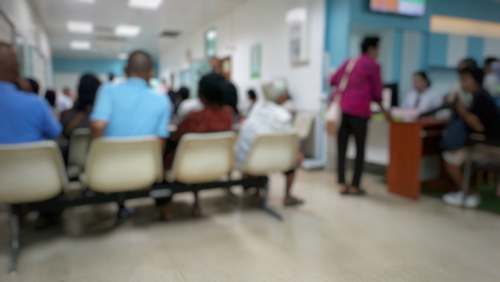
A brief search on Google Scholar into coercive practice in mental healthcare reveals the existence of thousands of research papers, each primarily concerned with the ethicality of coercion in psychiatric care. Almost unanimously, the papers argue that, as Sashidharan, Mezzina and Puras (2019) neatly summarise, “[coercive practice] in its various guises is embedded in mental healthcare”. The general consensus of the research available is that coercive practice “should be avoided whenever possible” (Müller et al., 2023).
When the innate power imbalance between practitioner and patient (and the near-biblical weight of the Mental Health Act in determining a patient’s fate) is considered, the interconnectivity of coercive practice and psychiatric treatment seems unavoidable. Coercion, then, is not simply integral to mental healthcare; it is accepted as such.
Although there has been an increase in research surrounding the application of coercive practice in the last few years, much of this research is fixated on whether or not coercion is necessary, and, where it is used, its potential consequences for both patients and practitioners alike. There appears to be very little research asking why coercive practice is so commonplace, and how its frequency could be reduced. This blog discusses one such study.

This study explores the concept that instances of staff-on-patient coercion can be predicted by patients’ circumstances.
Methods
Müller et al.’s (2023) study Predicting coercion during the course of psychiatric hospitalisations explores the relationship between a patient’s clinical and sociodemographic circumstances and the consequential duration and frequency of coercive measures used in their treatment, with the aim of identifying ‘risk factors’ that correspond with an increase in coercion.
Data from patients detained at a 320-bedded adult psychiatric hospital in Switzerland was analysed over three years. Regression models – statistical techniques which aim to determine the quality of relationships between one dependent variable (in this case, acts of coercion) and various independent variables – were applied; these models were then interpreted with the aim of revealing what independent variables might predict a patient’s exposure to coercion.
Results
A large sample size of data from 8,700 patients, collected by clinicians over 16,607 voluntary and involuntary admissions at Switzerland’s largest psychiatric unit, was used in the analysis.
Of the sample, most patients (77.4%) were admitted voluntarily whilst a minority (22.6%) were admitted involuntarily. Data consisted of routine documentation collected by the hospital, diagnostic assessments based on the ICD-10, and observer-rated scales GAF (Global assessment of Functioning) and HoNos (Health of Nation Outcome Scales). Both the GAF and HoNos intend to measure a patient’s functionality and observable symptoms of mental illness.
Outcome measures
The measured outcomes of this study (referred to as coercion or coercive measures) were limited to three categories:
- Seclusion (confining a patient to a locked room).
- Mechanical restraint (using belts to strap a patient to a bed).
- Forced medication (medicating a patient against their will by use of force).
Outcomes were measured by frequency and the time between first and last application of coercion. The duration of individual episodes of coercion were not recorded and did not form part of the study’s analysis.
Predictive variables and process
Müller et al.’s (2023) study recorded 14 independent variables in relation to each patient and their respective admission/s. These included:
- Age, gender, civil and residential status;
- German language skills;
- Diagnostic category;
- Initiant of hospitalisation (self-referral, referral by GP, etc.);
- No. of previous hospital admissions and duration of admission;
- GAF score at admission and discharge;
- HoNos total admission and discharge score.
A bivariate analysis (comparison of two variables to calculate the relationship between these variables) was conducted by use of statistical software. Outcome measures were combined into one (dependent) variable, ‘coercion’, so that bivariate analyses consisted of determining associations between acts of ‘coercion’ as a singular variable and patients’ individual sociodemographic and clinical circumstances.
Analyses findings
Evaluation of the collated data indicates that the use of coercion in a patient’s admission was, in this instance, bi-variately linked to the presence of specific variables:
- male gender,
- being widowed,
- having limited German language skills,
- displaying psychotic and manic episodes,
- being involuntary admitted to hospital,
- having lower clinical functioning at admission,
- having previous hospital admissions, and
- admission being initiated by a medical clinician.
Coercion was exerted in a total of 6.9% of cases, and, of the cases where coercive measures were applied, at least a second coercive measure was exerted 69.7% of the time. In 50% of cases where coercion was present, the first coercive measure was applied within the first 3 days of admission.

Coercive measures were more likely to be used in the first week of a hospital admission.
Conclusions
Müller et al. (2023) conclude that:
knowing the risk factors may help to target preventive strategies for those at highest risk. In particular, interventions should focus on the critical timeframe at the beginning of treatment.
In summary, the study argues that some clinical and nonclinical characteristics of a patient, as well as the nature of their hospital admission (i.e. self-referred, referred by GP, etc.), may predict the likelihood of coercive measures being used during their admission to psychiatric hospital. In the instance of this particular study, the authors show that coercion occurs more frequently in the first week of a patient’s admission.

An attempt to move beyond ethical debate and into ‘ground level’ practice separates this study from others concerning coercion in psychiatric hospital settings.
Strengths and limitations
This study presents an intriguing exploration into associations between a person’s sociodemographic and clinical circumstances and their experience/s of coercion during hospital admissions. It contributes to an under-researched area by collating material from existing studies on attitudes towards coercion in order to move beyond moral debate and into day-to-day practice. The motivations of this study are clear, and its results intend to be applicable ‘at ground level’.
Some of the strengths of this study include
- The large (albeit limited – see paragraph below) sample size.
- The potential for practical application of results in (at least) the hospital where the sample was recruited.
- The suggestion of possible strategies to reduce coercion. This section is important because it recognises predictors for coercion beyond patients’ own circumstances (i.e. at organisational level).
However, the study took place at only one hospital, which introduces selection bias; sociodemographic data from patients at one location cannot accurately represent a local population of patients. Furthermore, the use of coercion varies considerably across psychiatric hospitals (Mann et al., 2021), meaning that the results of this study may only have implications for practice at the hospital where the cohort was recruited. The authors do not appear to have fully acknowledged this limitation.
Measurements used to classify subjects into exposure groups (such as diagnoses and language skills) are not all objective. For instance, the ICD-10, GAF and HoNos are tools that rely on subjective perceptions and evaluations of a patients’ observable behaviour. The study design has allowed for multiple raters to record patient data, creating a potential for inconsistency in the quality of records and clinical opinion.
Likewise, cases of coercive practice were calculated based on data recorded by multiple hospital staff; this is unreliable, as the quality of data likely fluctuated depending on the capacity of the staff on shift at any time. The definition of seclusion used in this study was not clearly defined in that it did not describe how long a patient needed to be placed in seclusion for it to be considered coercion; this could have led to error or bias in the outcome measurement.

A limited sample and issues with the research design prevent the results of this intriguing study from being applied to a wider population.
Implications for practice
Müller et al.’s (2023) findings suggest that some people are more at risk of being exposed to coercion when admitted to psychiatric hospitals than others. But how can these findings be implemented in practice? Do the results of this study have significant implications for psychiatry ‘at ground level’?
Despite this study’s ambitious drive for results that could impact patients’ treatment programmes, it’s difficult to envision where the authors’ findings could be utilised beyond the parameters of one Swiss psychiatric hospital and future research. Opting to perform the study at only one hospital makes the results essentially inapplicable at others; variations in staff training, perceptions of coercion, and cultures within different hospital settings have been overlooked. Additionally, flaws in the design of this study have created room for subjective interpretation of patient records and clinical presentation, which is particularly harmful when the authors have attempted to work with information intended to be quantitative, and perceived as objective.
That being said, there is significant scope for research based on some of the secondary findings of Müller et al.’s study. For instance, the authors found that most incidents of coercion occurred within a patient’s first week of admission; 50% of patients who experienced coercion were subjected to coercive measures within the first 3 days of their admission, and 50% of those who experienced coercion received their last coercive measure by the 8th day of their admission. A direction this type of research might follow would be to ask why this is the case; likewise, it would be fascinating to understand why some of the samples’ sociodemographic status appeared to suggest they were at greater risk of being subjected to coercive measures.

By its fundamental nature, coercion is an act of force that removes or violates the liberty and choice of its victim; nobody is an active participant in their own coercion.
Lived experience reflections
As a previous inpatient of psychiatric hospitals myself, it’s disappointing to see research that ascribes the cause of coercive treatment to the person who is themselves being coerced. Research that looks for the causes of coercion within psychiatry by asking what a patient has done to ‘deserve’ to be coerced will only ever take researchers as far as their initial question; if a patient’s sociodemographic and clinical circumstances can predict whether or not they are coerced, it’s not because these circumstances ‘make’ them at risk of coercion. People, institutions and systems that coerce, put people at risk of coercive treatment. By its fundamental nature, coercion is an act of force that removes or violates the liberty and choice of its victim; nobody is an active participant in their own coercion.
In Müller et al.’s study, coercion is categorised as either seclusion, medical restraint or mechanical restraint. Similar studies tend to have similar classifications: Anderson and Neilsen’s (2016) study Coercion in psychiatry: the importance of extramural factors defines coercion as “belt restraint, physical restraint, and forced medication”; Lau et al.’s (2020) observational study into reducing coercion defines coercion as “seclusion, restraint, or forced medication”; and Hotzy et al.’s (2018) study into the prevalence of coercive measures defines the measures as “seclusion, restraint, coercive medication”.
Very few studies into coercive practice in psychiatric inpatient care acknowledge ‘subtle’ acts of coercion, which are often intrinsic to established psychiatric treatment programmes and commonly experienced by patients. ‘Subtle’ coercion includes:
- Verbal threats and emotional blackmail, e.g. ‘if you refuse to take your medication, we’ll have to inject you with it’ or ‘if you refuse to eat, we’ll have to send you to a more secure unit further from home’.
- Non-verbal/implicit threats and emotional blackmail, e.g. knowing that refusal to engage with the therapeutic programme will result in deprivations of liberty; knowing that you may be sectioned, put in seclusion, or restrained at any time.
- Punishment-reward system for therapeutic engagement, e.g. allowing patients access to liberties for ‘positive’ behaviours and denying patients access to liberties as a result of ‘negative’ behaviours.
Omitting ‘subtle’ acts of coercion from research reinforces perceptions of patients as being responsible for coercion; overtly coercive measures tend to occur in scenarios where a clinician could argue that coercion was necessary for the safety of the patient and/or others in the vicinity. It’s much harder to perceive a patient as responsible for ‘subtle’ coercion, like threats, blanket restrictions and punishment–reward systems.
Thus, I believe that the only way to progress with research into the use of coercion in psychiatry – especially with the intention of reducing coercive practice – is not to ask why individual patients themselves are subjected to coercive measures, but instead to ask why clinicians, institutions and systemic psychiatric ideologies and values rely on coercion as a method of detaining and treating patients. If we can begin to understand what underpins coercion in psychiatry, then, hopefully, we can begin to move towards treatment that promotes dignity, liberty and empowerment.

Nima is co-founder of First Do No Harm, a non-profit organisation against the abuse of people in psychiatric hospitals. She has previously experienced coercion in hospital settings.
Statement of interests
I have previously been an inpatient at psychiatric hospitals and have personal experience of coercive measures. I am also co-founder of non-profit organisation ‘First Do No Harm’ which intends to improve patient experiences of inpatient mental healthcare and eradicate institutional abuse.
Links
Primary paper
Müller M, Brackmann N, Jäger M, Theodoridou A, Vetter S, Seifritz E, Hotzy F. (2023) Predicting coercion during the course of psychiatric hospitalizations. Eur Psychiatry. 2023; 66(1): e22. Published online 2023 Jan 26. doi: 10.1192/j.eurpsy.2023.3
Other references
https://www.nationalelfservice.net/publication-types/umbrella-review/coercion-mental-health-act/
https://www.sciencedirect.com/science/article/pii/S0160252723000614
https://www.frontiersin.org/articles/10.3389/fpsyt.2021.790886/full
https://www.ncbi.nlm.nih.gov/pmc/articles/PMC7032511/
https://www.tandfonline.com/doi/full/10.1080/08039488.2016.1190401
https://www.frontiersin.org/articles/10.3389/fpsyt.2020.00465/full
